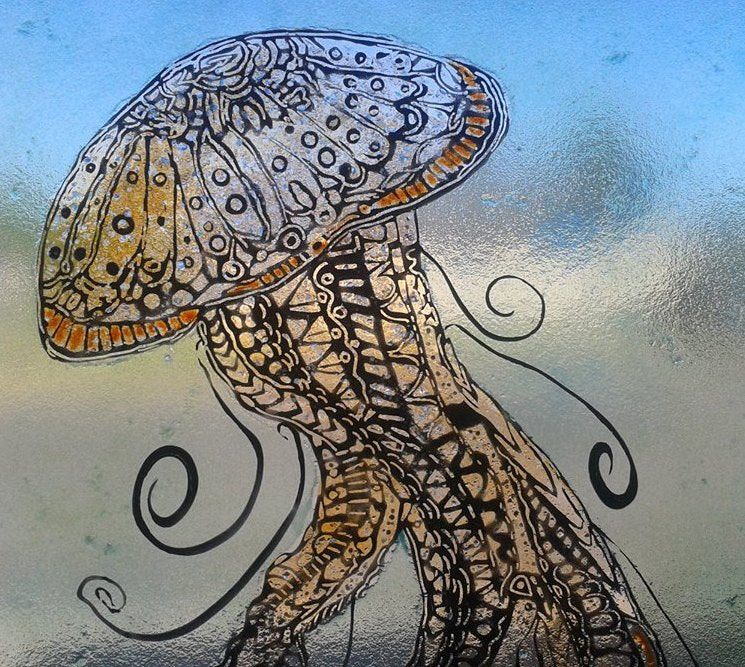February 11, 2019
Irene Richardson
Glassline Paint Pens - Instructions
Glassline Fusible Paint Pen Use:
Materials:
Cathedral Glass, Design, Latex gloves, Rubbing alcohol, Flour sack towel, Tooth pick, Razor Blade, Paint Brush with Soft Bristles for sweeping, Paint Brush with Hard Bristles for stippling, Hair dryer White paper:
Directions for Tracing:
1. Put on your gloves and clean the glass with rubbing alcohol and the flour sack towel. If you choose to not wear gloves then be aware that fingerprints can show up on the glass after it is fired.
2. Set your design on your work table then set your glass on top of the design.
3. Prepare your paint by shaking it. It should sound very sloshy when shaking it. If it is not sloshy sounding then add a little bit of water and shake some more.
A. Note: If you over water your paints then set it aside with the lid off to allow the water to evaporate.
4. Screw on the metal applicator tip size that you desire. Make it taunt then back it off a smidge. A tight applicator tip can over close the end and make the paint gush out from where the cap screws onto the bottle.
5. On a clean test pallet draw a line. If you have to squeeze hard then more water will need to be added.
6. Once you have the flow and feel practice line the way you like then begin tracing the design onto your glass.
7. Be sure to not make the paint too thick. It will look cracked when it dries and then it will look cracked when you fire it. But, a cracked look is sometimes what we want. Do keep that in mind.
8. Dry your paint with a hair dryer.
9. Scrape away unwanted paint using a scraping tool such as a toothpick, razor blade, Xacto knife, or any scraping tool you like..
10. Sweep away the particles of paint that were scraped away using a soft bristled paint brush.
11. Chop up the scraped away paint particles on a pallet to become small granules using a razor blade then put them back into the bottle to be re-moistened and re-used.
12. When we have dust of the paints sometimes I put the dust in a 2oz portion cup, write on the lid the GA number of the paint. Then use the dust sprinkled on art like I do with frit. Just another way to use the Glassline paints all up in a different way.
13. Fire the painted piece with the painted side up with no cap. The higher you go in temp the more vibrant the paints become. So they are the most vibrant on full fused art.
Firing Recipe for COE 96 piece that is 5” Square and One piece thick.
Segment Rate/HR Temp Hold
1 300 1375 0.10
2 9999 950 0.30 First anneal
3 100 800 0.15 Second anneal hold time for me is half the time of the first anneal.
Do adjust the recipe to work with your kiln. The firing should be at least to a dimensional fuse to make the paint be adhered to the glass.
Stippling the paints on glass:
1. Put on your gloves and clean the glass with rubbing alcohol and the flour sack towel. If you choose to not wear gloves then be aware that fingerprints can show up on the glass after it is fired.
2. Set your design on your work table then set your glass on top of the design.
3. Prepare your paint by shaking it. It should sound very slushy when shaking it. If it is not slushy sounding then add a little bit of water and shake some more.
** Note: If you over water your paints then set it aside with the lid off to allow the water to evaporate.
4. Squeeze a few different colors of the paints onto your glass then take a stippler brush and stomp it into the paints and all over the glass. If you stomp too many times into the mixed colors it will turn the colors to brown. I try to keep the stomping limited to slight stomping of a couple of colors then clean out the brush and stomp more.
5. Dry the paints with a hair dryer then set in the kiln paint side up with no cap and fire per the recipe above.
Airbrushing can be performed as well. Simply water the paints to an air brush mixture flowing thickness and apply to the glass with an air brush.

